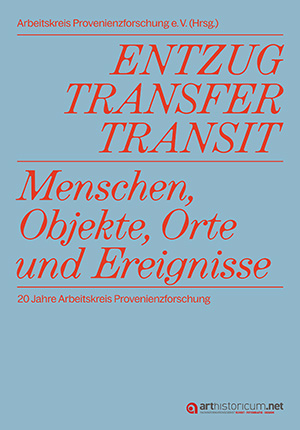How to Cite
License (Chapter)

This work is licensed under a Creative Commons Attribution 4.0 International License.
Identifiers (Book)
Published
Provenienzforschung ausstellen und vermitteln
Communicating provenance research
Museums’ societal acceptance is increasingly driven by the level of collection transparency they create for external interest groups. However, within the museum space, provenance research is not sufficiently visible, considering that active research takes place which has hardly been visible to date and urgently needs illustration and recognition. Apart from print publications, this field of research has been presented more and more in dedicated exhibitions over the last years. Nevertheless, not all exhibitions are suitable to address the subject of provenance research and not every provenance is suitable to become the subject of an entire exhibition. To achieve transparency about current provenance research and its results, it needs to be integrated into museum displays, and provenance information must be regarded as a complementary but necessary element of an exhibition.
The objective of the paper is a closer inspection of the status quo of the interface between provenance research and museum communication. Options and strategies will be shown which were developed by researchers and museums in order to exhibit and communicate their research and its (interim) results, both physically and digitally. The potential for museum communication held by provenance research will become apparent, as it can open (new) avenues of approaching not only the works in a collection but also the institution as such. The paper argues in favour of a »provenance by design« strategy which considers provenance research even in the formulation and development of working approaches and presentation strategies, thus integrating provenance research in all areas of museum work, as a path to critical reflection of the institution.







